Pyrite Is a Common Sulfi de Mineral And a Collector Favorite.
If you keep striking a piece of pyrite with a steel hammer, sparks fly and the air is filled with a noxious odor. Perhaps without realizing it, you have discovered the chemical makeup of pyrite: iron (sparks) and sulfur (odor). Tiny bits of iron (Fe) will flash from the heat of friction due to the strike. Sulfur (S) is released at the same time in the form of a gas that has a distinctive “rotten egg” odor.The ancients called it /pyrites lithos—” re stone”.
The Stone that Strikes Fire
Molecules of pyrite are composed of one iron atom and two sulfur atoms. It is the most common of all the sulfides and among the easier ones to identify. It is also a wonderful mineral species to collect because of its fascinating variety of crystal forms, which range from the simplest of cubes to some of the most complex twins and multifaced—as many as 48—crystals! It can form concretions, disks called pyrite “suns”, and other oddities. If you ever decide to collect just one species, you should consider pyrite because of its abundant occurrences and wonderfully varied crystal forms.
Pyrite is found in virtually every rock formation and is particularly abundant in some sulfide mines. Scientists have even found it among the several sulfides produced by the amazing black smoker gushers we have discovered along the boundaries of continental plates, such as those in the Red Sea and Pacific Ocean.
Pyrite forms in the isometric system, which means the simple cube is the basis for its varied crystal forms. Cubes are common, so it is not unusual to see a whole line of simple cubes, ranging in size from the tiniest fraction of an inch to something measuring in inches. At shows, these are o en displayed in a curving line from smallest to largest.
This story is from the November 2016 edition of Rock&Gem Magazine.
Start your 7-day Magzter GOLD free trial to access thousands of curated premium stories, and 8,500+ magazines and newspapers.
Already a subscriber ? Sign In
This story is from the November 2016 edition of Rock&Gem Magazine.
Start your 7-day Magzter GOLD free trial to access thousands of curated premium stories, and 8,500+ magazines and newspapers.
Already a subscriber? Sign In
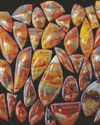
MORGAN HILL POPPY JASPER
In California, there are very few places to collect semi-precious stones. Many locations from the past have been either exhausted of the material or the land has been developed.
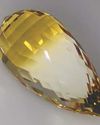
THE ACORN
The briolette gemstone has the same design attributes of a regular gemstone, however, the pavilion is elongated and the crown is usually domed. This is perfect for an elegant pendant, earrings or a pendulum.
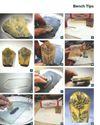
HOW TO PUT A PROTECTIVE CAP ON A CAB
To protect a specimen cab, often a cap is needed. In my case, I had a slab with the because of the color of the background and the pattern. This background had a more silicified consistency than most sandstones. It had no graininess like most sandstone, so I'm inclined to compare it to a jasper. The pattern was typical of a dendrite.

The Resilient Revival of Anne Brontë & Her Stones
For the first time, the Anne Brontë rock collection underwent complete description and identification, and along with Professor Hazel Hutchison of Leeds University and Dr. Enrique Lozano Diz at ELODIZ (a company specializing in spectroscopy analysis), an analysis of that collaboration, Anne Brontë and Geology: A Study of her Collection of Stones, was published in April 2022 in Volume 47, Issue 2 of the peer-reviewed journal, Brontë Studies & Gazette.\"

Amazing Women with Rock-Solid Careers
Explorers, Geologists, Educators & Jewelry Makers...
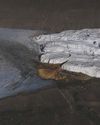
The Case of the Bleeding Glacier
It's a gory sight called Blood Falls. Ever since British geologist Thomas Griffith Taylor first noted it in 1911, it has been a mystery.
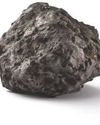
Asteroid Samples Are Said to Hold Invaluable Secrets
If Only Scientists Can Pop the Lid!

Paleontologists Embrace a New Method for Seeing Fossils within Rock
Fossil bone can be delicate. Attempts to remove it from a hard rock matrix by picking and scratching or etching with acids can be time-consuming and/or may end up obliterating that which you hope to study.

Need a Map of the Ocean Floor?
Call in the Seals!

A Step Closer to Hydrogen, the "Climate-Friendly Fuel"
As I reported last June, the world is racing to find sustainably renewable, nonpolluting sources of energy to replace our carbon-based reserves of coal, oil and gas.